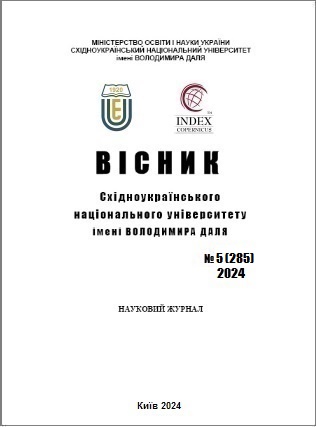The importance of using descriptive geometry knowledge when developing a sketch
DOI:
https://doi.org/10.33216/1998-7927-2024-285-5-59-64Keywords:
sketch, graphic disciplines, the drawing, descriptive geometry, model, shapingAbstract
Descriptive geometry is a supporting discipline not only for the course of drawing, which is what its role in the system of higher technical education is actually reduced to, but as a branch of mathematics, it serves as a basis for applied geometry, which solves optimisation multi-parameter, multi-factor problems of design, technology, economics, sociology, etc. The main task of this publication is to present the author's point of view on the role and place of descriptive geometry, as well as the need to use it when developing sketches. Design documents intended for one-time use can be made in sketch form. A sketch is an image made without the use of drawing tools, by hand, according to the rules of axonometry in an eye-view scale, observing the proportions of the detail. In this case, the same rules are followed as for the construction of axonometric projections: the axes are placed at the same angles, an the dimensions are plotted along the axes or parallel to them. In a number of cases, sketches are used to create working drawings. In some cases, the sketches are used to make parts based on them. A modern student should strive not only for a higher degree of mastery of specialised knowledge, skills and abilities, but also to gradually move from teacher-led activities to self-study. Higher education should train specialists of an integral type of thinking, capable of synthesising knowledge and skills at all stages and levels of continuous education. The discipline «Descriptive Geometry» contributes to the development of spatial abstract thinking, which is necessary for engineering and design activities [6]. In their professional activities, engineering students are faced with the development of designs for structures, mechanisms, and machines, which requires knowledge of projection image theories. Modern teaching methods pay considerable attention to the use of the information and educational environment ‒ a system of information sources available to the user, methods and means of processing it, as well as the conditions of the subject's information interaction with these sources. The complex of graphic cycle disciplines studied at universities is undergoing major changes all the time. Today, computer technologies for developing design documentation are actively used and studied. It is necessary, and everyone recognises this. Descriptive geometry remains a stumbling block. Is it necessary as an academic discipline? Why do students of technical universities need descriptive geometry? These questions are asked by both supporters and opponents of the discipline. The authors of this article have tried to answer these and other questions.
References
1. Ткаченко В. Л., Тищенко Ю. А., Суховерхов В. К. Нарисна геометрія: навч. посібн. Луганськ: Вид-во Східно-українського національного університету імені Володи-мира Даля, 2004. 192 с.
2. Петренко О. Я. Проектування тривимірних об’єктів засобами AutoCAD. 2008: Навчальний посібник. К: ІПДО НУХТ, 2010. 64 с.
3. Джеджула О. М., Островський А. Й. Нарисна геометрія. Навчальний посібник. Вінниця: ВНАУ, 2019. 296 с.
4. Буда А. Г. Нарисна геометрія. Збірник прикладів та задач з теоретичними відомостями для студентів машинобудівних спеціальностей. Вінниця: ВНТУ, 2005. 142 с.
5. Карпюк Л. В., Гуліда М. І., Ревенко С. А. Комп’ютерна графіка в машинобудівних кресленнях: навч. посібник. Луганськ : Вид-во СНУ ім. В. Даля, 2007. 132 с.
6. Ткаченко В. П., Тищенко Ю. А., Суховерхов В. К. Нарисна геометрія: навч. посібник. Луганськ : СНУ ім. В. Даля, 2004. 192 с.
7. Боголюбов А. Н. ГаспарМонж. Изд. Наука, 1978. 184 с.

